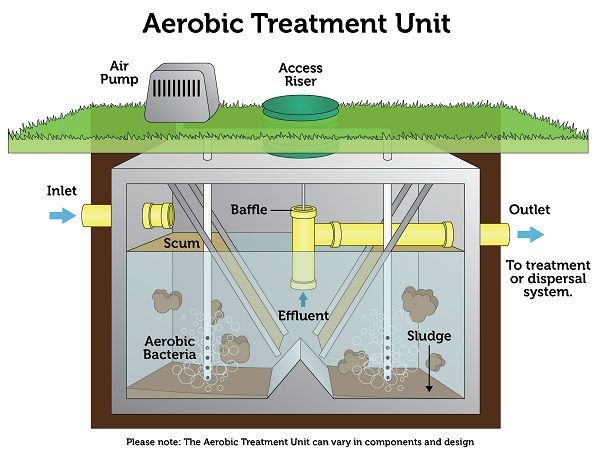
ATU Septic System: Understanding How it Works and its Benefits
An Aerobic Treatment Unit (ATU) is a type of septic system that utilizes aerobic bacteria to break down organic matter in wastewater. This system is a popular alternative to traditional septic systems because it offers several benefits, including improved treatment efficiency and reduced environmental impact. In this blog, we'll take a closer look at how ATU septic systems work and the advantages they offer.
How ATU Septic Systems Work
ATU septic systems are designed to treat wastewater using aerobic bacteria, which require oxygen to break down organic matter. Unlike traditional septic systems that rely on anaerobic bacteria to treat wastewater, ATU systems require aeration to promote the growth of aerobic bacteria. Aeration is achieved through the use of air pumps, which supply oxygen to the system's treatment tank.
The ATU system typically consists of several components, including a treatment tank, air pump, control panel, and discharge area. Wastewater from the home is directed to the treatment tank, where it is treated by aerobic bacteria. The bacteria break down organic matter, converting it into carbon dioxide, water, and other harmless byproducts.
The treated wastewater is then discharged to a designated area, such as a drainage field or irrigation system. The discharge area is typically located at a higher elevation than the treatment tank, which allows for gravity to facilitate the movement of treated wastewater.
Benefits of ATU Septic Systems
1.) Improved Treatment Efficiency
ATU septic systems are known for their superior treatment efficiency. The aerobic bacteria used in these systems are more effective at breaking down organic matter than anaerobic bacteria, which leads to cleaner effluent. This means that the water discharged from an ATU system is of higher quality than that of a traditional septic system.
2.) Reduced Environmental Impact
ATU septic systems also have a reduced environmental impact compared to traditional septic systems. Since the effluent is cleaner, there is less risk of contaminating groundwater or nearby bodies of water. Additionally, since the effluent is cleaner, it can be used for irrigation purposes, which can help conserve water.
3.) Lower Maintenance Requirements
ATU septic systems require less maintenance than traditional septic systems. This is because aerobic bacteria are more efficient at breaking down organic matter, which means that the treatment tank does not need to be emptied as frequently as a traditional septic system. Additionally, since the effluent is cleaner, there is less risk of clogging in the drainage field or irrigation system.
4.) Compact Design
ATU septic systems are often designed to be more compact than traditional septic systems. This is because the aerobic bacteria used in these systems are more efficient at breaking down organic matter, which means that a smaller treatment tank can be used. This can be an advantage for homeowners with limited space on their property.
Conclusion
ATU septic systems offer several benefits over traditional septic systems, including improved treatment efficiency, reduced environmental impact, lower maintenance requirements, and a more compact design. If you're interested in installing an ATU septic system, it's important to work with a professional septic contractor who has experience with these systems. With proper installation and maintenance, an ATU septic system can provide reliable and efficient wastewater treatment for your home.
